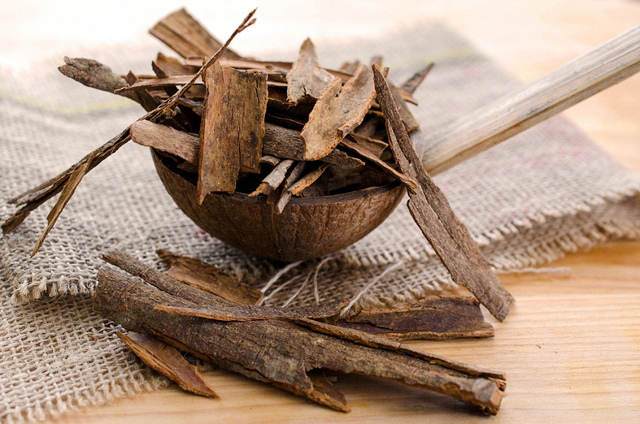This post is part of a monthly series here on FBC called The Spice Box. Primarily written by Michelle Peters Jones, these posts will create a spice primer for new and experienced home cooks alike! Have a spice you'd like to see profiled? Let us know in the comments.
Cassia Bark
Latin Names: Cinnamomum Cassia (Chinese)/ Cinnamomum Burmannii (Indonesian)/ Cinnamomum Loureiroi (Vietnamese)
One of the most familiar spices in the Indian kitchen is cassia bark. As I read and researched more about cinnamon, I found out that cassia is actually a genus of cinnamon, and commonly grown in China, and therefore also known as Chinese Cinnamon. It grows extensively in China and South East Asia, and is cheaper to cultivate than 'true' cinnamon. Chinese cinnamon is the cheapest and exported widely around the world, and comprises a large portion of the ground cinnamon market.
There are three commonly used types of cassia: Chinese, Indonesian and Vietnamese (Saigon). Saigon cassia tends to be more expensive, mostly due to disruptions in its growth and production. India and Sri Lanka (Ceylon) are also huge producers of cassia, with the state of Kerala in India, in particular, having some of the largest cassia/ cinnamon estates in Asia.
Cassia bark is widely used in Indian cooking, in particular, most probably because it is cheaper to buy and use. However, taste testing also suggests that the flavour of cassia is milder and less intense than 'true' cinnamon, and this contributes to the flavour profiles of several Indian dishes in which cassia is widely used.
Cassia bark can be easily identified by its rough, tree bark like texture and tends to be extremely hard and difficult to powder. The flavour, as I said earlier, is milder and less intense to cinnamon, and you have to rub your fingers on it to get a sense of the fragrance. The profile is warm and aromatic, similar to cinnamon, but the taste tends to be less overpowering, therefore it can be used in larger quantities to ground or 'true' cinnamon.
Cassia Bark - Flavour Profile
Cassia has an easily identifiable flavour profile. The usual words to describe it tend towards 'sweet' 'fragrant' 'warm' 'aromatic' and 'delicate'. It has a pronounced spicy-warm flavour that complements the other spices that it is normally used with, like cloves and cardamom. It tends to be used in several spice blends, particularly the traditional Indian garam masala, as well as Madras curry powder. You can substitute 'true cinnamon' for cassia bark, but make sure to use less of 'true' cinnamon, as it has a stronger flavour. Ground cinnamon also tends to be stronger than whole cinnamon or cassia, so again, caution in substitutions is recommended.
How To Use Cassia Bark
Cassia bark is used in a similar way to several of the other spices used in ethnic cooking. It is a very hard spice, so it's next to impossible to manually powder it in a mortar and pestle, so I highly recommend using a spice grinder. You can also repurpose an old coffee grinder, but make sure you don't grind any coffee in it after you have used it for spice blends.
To use, break up the cassia bark into smaller, more manageable pieces, after which dry roast it to activate the essential oils and give it a burst of flavour. To dry roast cassia, heat a heavy based pan to a medium high temperature, then add the cassia bark. Shake or stir the cassia bark in the pan vigorously, so it doesn't burn. It usually takes between 30 - 45 seconds, at which point the spice should smell fragrant. Turn out immediately into a bowl and let cool completely before using it in your spice blends.
Cassia bark is also available in the Asian section of some larger supermarkets. Whole cassia stores easily and lasts for a long time. You can also buy cassia bark online, I like Silk Road Spices from Calgary and Spice Sanctuary from Banff.
Cassia Bark Trivia
And finally... did you know that most of the ground cinnamon sold in North America is actually cassia?
**Cassia Bark image courtesy of Michelle Peters-Jones







Leave a Reply